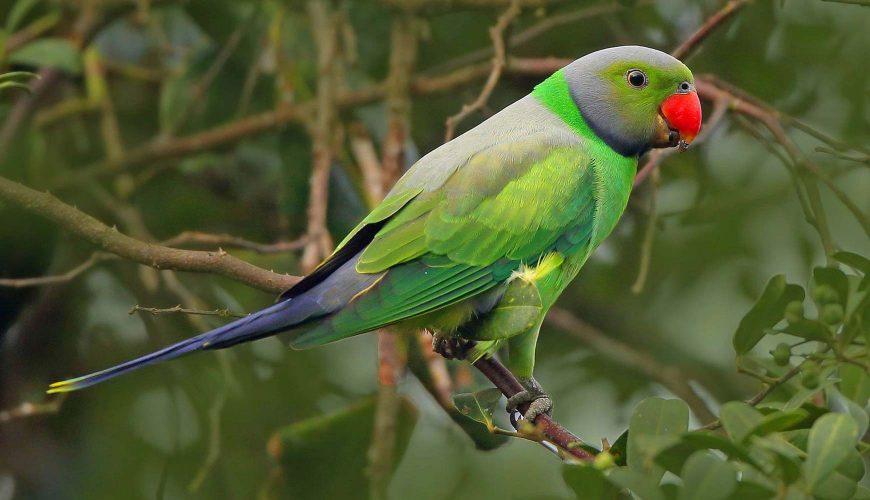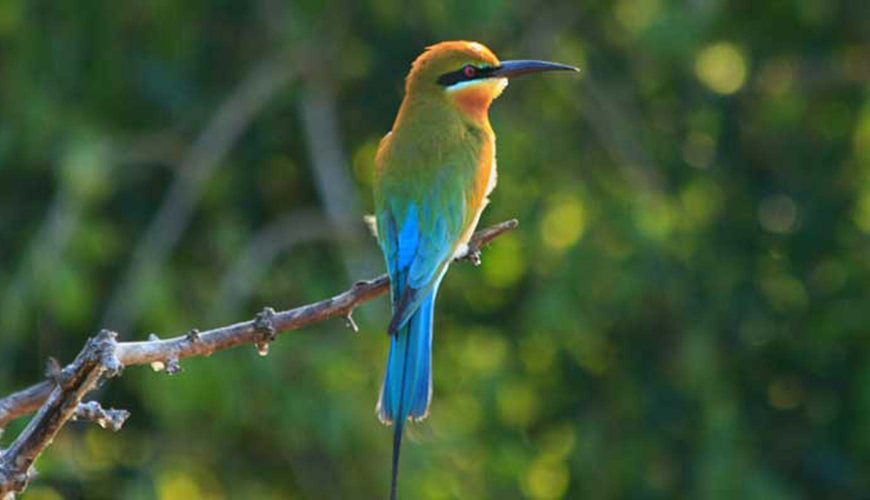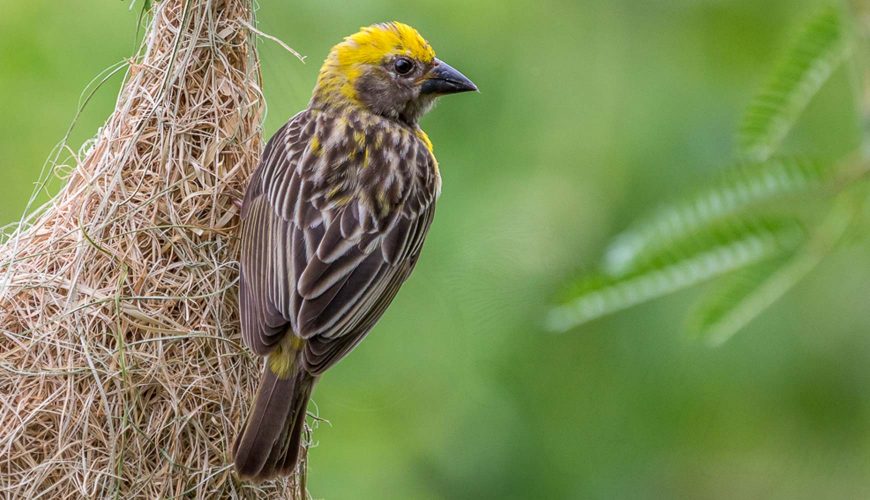INTRODUCTION
Sri Lanka is a birdwatching destination with much to offer. A good network of roads and national parks combined with a good infrastructure for tourism place the 33 endemics within easy reach of birders. Dedicated birders will spend most of their time in the wet lowlands and the highlands where the endemics are concentrated, but there is much for the casual birdwatcher throughout the country. There is still enough forest cover around the major archaeological sites for a family on a general tour to combine birdwatching with culture. Over 100 species of birds can be seen, for example, in the environs of the cultural cities of Anuradhapura and Polonnaruwa.
THE CLIMATIC ZONES
Topographically, Sri Lanka can be described as comprising three peneplains or erosion levels. The lowest level, from 0-30 m forms the coastline and much of the north-central plains. This encircles a hilly centre in the southern half formed of a second peneplain rising to 480 m and a third higher peneplain rising to 1,800 m. The central hills are an obstacle to the path of the two monsoons causing them to shed rain. The north-east monsoon occurs between October and January bringing rain mostly to the north-east, and the south-west monsoon brings rain between May and August to the south-west. Some parts of the hills receive rain from both monsoons. The Peak Wilderness Sanctuary in the hills has been described as ‘the most constantly wet part of Asia west of Borneo’. The combination of rainfall and topography has resulted in climatic zones supporting races of animals and birds confined to a particular zone. Broadly speaking, the zones are divided into the dry zone comprising the coastal areas in the north, east, south and the north central parts of the country, and the wet zone comprising the west and the hilly central massif. The wet zone could be further sub divided into the low, mid and high elevations. The wet zone is where much of Sri Lanka’s biodiversity is concentrated. Despite a long tradition of natural history study, species await description even amongst the higher animals such as small mammals, reptiles and amphibians. Some of Sri Lanka’s endemic species probably vanished before science could even describe them as the hill forests were cleared in the 19th century for coffee.
A new species of owl, the Serendib Scops-owl (Otus thilohoffmanni) discovered in 2001, demonstrates how many vertebrate species still await discovery. Five years of patient field work led to a discovery which overturned the myth that the Sri Lankan avifauna was well documented with no new species likely to be discovered. It was the first species to be discovered in the field (as opposed to ‘cryptic species’ already in museum collections) in Asia in over a century.
THE AVIFAUNA OF SRI LANKA
The island has 234 breeding bird species, of which 33 are recognized as endemic by Pamela Rasmussen and John Anderton in their book, Birds of South Asia: The Ripley Guide, published in 2005. The bulk of the resident breeding species are shared with the Asian mainland, with a few confined to Sri Lanka and the Indian mainland. A few resident birds have a cosmopolitan distribution. A further 209 species have been recorded purely as migrants to the country. The majority of these migrate to Sri Lanka during the northern winter and are present from about August to April. In contrast, pelagic species of seabirds like shearwaters, petrels and storm-petrels migrate to Sri Lankan waters from southern oceanic islands during the southern hemisphere’s winter. Of the migrants, about 120 species regularly visit the country. The rest are occasional visitors and vagrants. Within the country, some species are distributed according to the climatic zones, being restricted to either the wet or dry zone. The endemics are largely confined to the wet zone. The distribution of birds is also influenced by altitude and some species may be restricted to the low country wet zone with others confined to the montane wet zone. In total 82 families are represented in the Sri Lankan avifauna.
How many endemics?
There is no clear consensus on how many bird species are endemic to Sri Lanka. A detailed taxonomic discussion is outside the scope of this book. For the purpose of this book we have followed the treatment in Birds of South Asia: The Ripley Guide by Pamela Rasmussen and John Anderton. The 33 species recognised as endemic by Rasmussen are listed below:
- Ceylon Spurfowl – Galloperdix bicalcarata
- Ceylon Junglefowl – Gallus lafayetii
- Ceylon Woodpigeon – Columba torringtonii
- Ceylon Green-pigeon – Treron pompadora
- Ceylon Hanging-parrot – Loriculus beryllinus
- Layard’s Parakeet – Psittacula calthropae
- Green-billed Coucal – Centropus chlororhynchos
- Red-faced Malkoha – Phaenicophaeus pyrrhocephalus
- Serendib Scops owl – Otus thilohoffmanni
- Chestnut-backed Owlet – Glaucidium castanonotum
- Ceylon Grey Hornbill – Ocyceros gingalensis
- Yellow-fronted Barbet – Megalaima flavifrons
- Ceylon Small Barbet – Megalaima rubricapillus
- Crimson-backed Flameback – Chrysocolaptes stricklandi
- Ceylon Swallow – Hirundo hyperythra
- Ceylon Woodshrike – Tephrodornis affinis
- Black-capped Bulbul – Pycnonotus melanicterus
- Yellow-eared Bulbul – Pycnonotus penicillatus
- Spot-winged Ground-thrush – Zoothera spiloptera
- Ceylon Scaly Thrush – Zoothera imbricata
- Ceylon Whistling-thrush – Myophonus blighi
- Dusky-blue Flycatcher – Eumyias sordidus
- Ashy-headed Laughingthrush – Garrulax cinereifrons
- Brown-capped Babbler – Pellorneum fuscocapillus
- Ceylon Scimitar-babbler – Pomatorhinus melanurus
- Ceylon Rufous Babbler – Turdoides rufescens
- Ceylon Bush-warbler – Elaphrornis palliseri
- Legge’s Flowerpecker – Dicaeum vincens
- Ceylon White-eye – Zosterops ceylonensis
- White-faced Starling – Sturnia albofrontata
- Ceylon Hill-myna – Gracula ptilogenys
- Ceylon Crested Drongo – Dicrurus lophorinus
- Ceylon Blue Magpie – Urocissa ornata
Sourced from published literature






Comment (0)